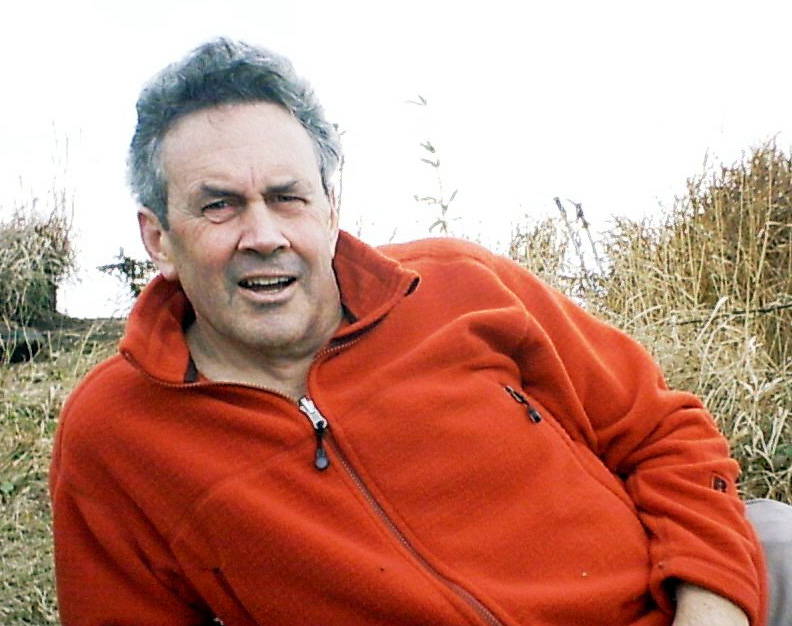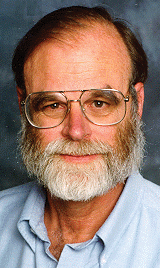Affiliated Geography Professor Jeff Dozier has just been awarded Microsoft Research’s 2nd Annual Jim Gray eScience Award. “The award, which includes a $20,000 cash component, recognizes innovators whose work has made an especially significant contribution to the field of data-intensive computing. It was established to honor the memory of one of Microsoft’s best-known researchers, Jim Gray, who went missing nearly three years ago while sailing to the Farallon Islands, near San Francisco, to scatter his mother’s ashes. Gray specialized in analyzing very large data sets and helped build the WorldWide Telescope” (http://www.bren.ucsb.edu/news/dozier_gray.htm). The following article is a feature story from Microsoft PressPass, titled “Jim Gray eScience Award Recipient Unlocks Secrets in the Snow”:
Jeff Dozier’s life’s work revealed itself in 1974, while he was 20,000 feet high in Afghanistan’s Hindu Kush range. “I was climbing with some friends, and one of them asked if we thought the slope could avalanche. I had no clue, and I thought to myself, ‘I can deal with risk. What I can’t deal with is not knowing.’” Not long afterward, Dozier – who then held a newly minted doctorate in geography from the University of Michigan – took a class about avalanches, and realized much of his academic work had application in the world of snow and ice. So he wrote a grant proposal to NASA for a study that would take the nascent worlds of computing and remote sensing via satellite and apply them to the study of mountain snowpack. “I’ve been working on those kinds of processes ever since,” he says.
That work has paid off. Dozier, a 65-year-old professor of environmental science and management who has taught at the University of California Santa Barbara for 35 years, is the winner of the second Jim Gray eScience Award – an award named in honor of a highly regarded scientist and Turing Award winner who was manager of Microsoft’s eScience Group when he went missing in early 2007 while sailing off the coast of San Francisco. Dozier is being presented the award Oct. 16 at Microsoft’s eScience Workshop 2009 in Pittsburgh, Pa. This year’s event has a theme of “Facilitating Scientific Discovery through Data-Intensive Computing.” It is being held at the Gates Center for Computer Science at Carnegie Mellon University.
Dozier’s work has helped create a better understanding of the role that snowfall and snowmelt have in the hydrologic cycle. Throughout much of the West, very little of the water that people use — from household tap water to agricultural irrigation — comes from rain. Rather, it’s from melting snow and ice in mountain ranges such as the Cascades and Sierra Nevada, where water is “banked” in the winter, then drawn down during the dry, warm summer months.
As evidence grows that climate change appears to be altering the cycle of winter snowfall/summer melt, Dozier’s studies have become increasingly important. “One big question in climate change is to understand what is likely to happen to the water cycle,” he says. “That’s probably more important than temperature change. If the rain/snow boundary moves to a higher elevation, then that has huge effects on how you manage water.” Warmer winters with less mountain snow, for instance, could cause greater winter flooding while leaving rivers dry in July and August.
Dozier has spent more than two decades working to understand the interaction between climate, snowfall, and water. Often that work has been on the cutting edge of science. In the early 1990s, for instance, Dozier took leave from the University of California to work as the senior project scientist for NASA’s Earth Observing System. In addition to helping manage a multi-billion dollar project, he conducts research with his students that takes advantage of the MODIS (Moderate-resolution Imaging Spectroradiometer) instruments that were launched into space aboard the Terra and Aqua satellites. The work with MODIS has changed snow hydrology because of the new ability to measure a host of snow properties, their trends, and their spatial variability all over the Earth.
Along the way, Dozier has worked to take advantage of the growing power of computers to crunch the mass of data produced by satellites and other measuring systems. “We started to think about those problems in the early 1990s, even though some of the satellites that would generate this data weren’t to be launched until the late 1990s,” he says.
Dozier, who taught himself programming while a college student, has worked with his wife and his colleagues to develop tools that can process and interpret huge quantities of data . “Now we can take a look at a piece of the Earth and on a daily basis look at how the snow cover changes and understand what those changes mean,” he says. “And it isn’t a big deal.” With that information, scientists can start to make practical recommendations about water management and other issues, Dozier says. “We’re working with some agencies that manage water and trying to deliver to them information that helps them do their jobs better,” he says. “Those kinds of efforts have the potential to be transformative” in how agencies make decisions.
It is Dozier’s ability to use technology to help interpret physical observations and make concrete recommendations that earned him the Jim Gray eScience Award. “Jeff Dozier’s work epitomizes what the Jim Gray eScience Award is all about: Using data-intensive computing to accelerate scientific discovery, and, ultimately, to help solve some of society’s greatest challenges,” says Tony Hey, corporate vice president, Microsoft External Research. “By combining environmental science with computer science technologies, Jeff brings a new level of understanding to climate change and its impact on our planet. Microsoft Research is proud to recognize him with this distinguished award.” Adds Bill Gail, a collaborator with Dozier who is director of strategic development for Microsoft’s Virtual Earth: “Jeff’s work addresses extremely important issues concerning how science gets translated into actions that impact people’s everyday lives. Increasing demands on water resources – coupled with climate-induced changes in their availability – put his research at the forefront of society’s needs.”
The award has a special poignancy for Dozier, who met Gray in the early 1990s when Dozier was working with NASA. “I was interested in dealing with lots of data, and of course he was interested and incredibly knowledgeable about computing technology and databases and what he saw as their future,” Dozier says. “So we had a very fruitful collaboration.” “I’m both delighted and humbled by the award,” Dozier adds. “Jim touched so many people so profoundly – he always listened, and he gave good advice.”



